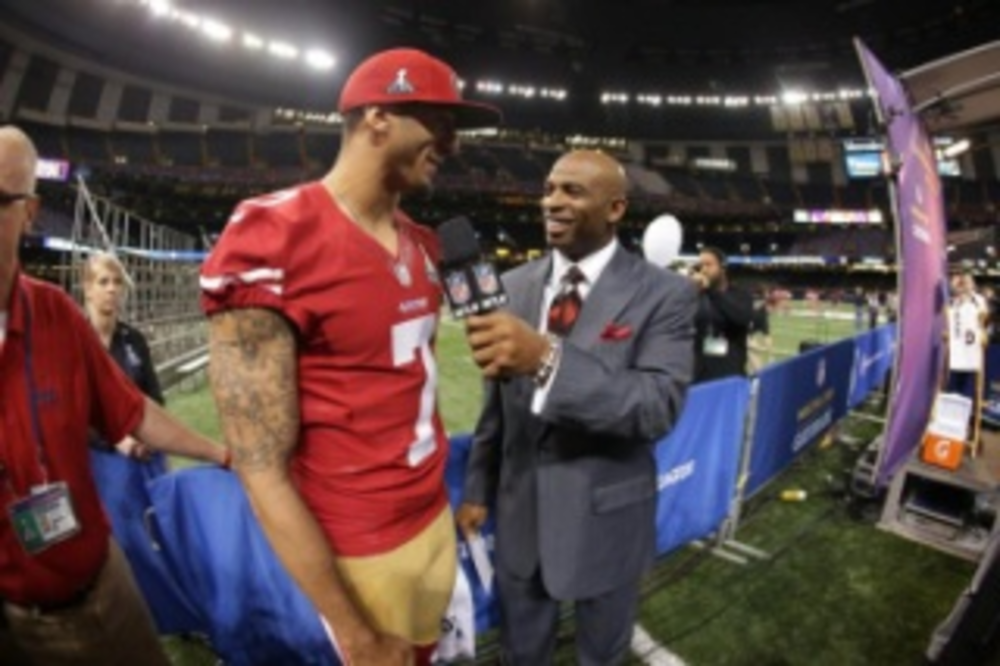Here in the quiet offices of Direct Marketing News, we’ve got a Packers fan (Elyse Dupre), a NY Giants fan (Al Urbanski), and a 49ers fan (me). But this week, we’re all 49ers fans. I say this not because any of my coworkers has more than a passing interest in the upcoming game between the 49ers and the Ravens; I say this because my enthusiasm for the event trumps any other emotion anyone else will have until Sunday evening.
Let’s just say if there’s one event that doesn’t need my further engagement, it’s Super Bowl Roman Numerals.
These big entertainment events always seem to have a built-in audience. Just ask Scott Givens, president of FiveCurrents, a production firm that creates those steroidal stadium experiences that kick off big games and big events. Over the past 25 years Givens and his team has worked on 11 Olympic Games—most recently London 2012, where he was managing director of the opening and closing ceremonies.
But building engagement for comparatively quieter events that request direct action from audiences can be tougher. For the past eight years Givens and his team have also worked with the Clinton Global Initiative (CGI), a forum created in 2005 by President Bill Clinton in which global leaders—heads of state and CEOs of Fortune 500s—convene and design solutions to world problems. The challenge for FiveCurrents at the time was that it hadn’t produced a conference that required direct action.
“Everyone that came to the event had to stand up in front of their peers and commit to an action that the Clinton Foundation follows up on,” Givens explains of the CGI’s first meeting in September 2005. “It was just us, and it was the charm of President Clinton, who said he’d hold people to their word.” These promises were formalized as a Commitment to Action.
“It’s not a beauty queen statement,” Givens says. “It’s ‘How do I reduce poverty in a measurable way?’” The Commitments had to be new, specific, and actionable. Walmart, for instance, reduced the size of its packaging, saving on materials and transportation costs. “There are three million kids in school because of the CGI,” Givens says. “Those are the results of a number of impactful Commitments.” Since its inception, there have been 1,900 Commitments effecting 170 countries—valued at more than $63 billion.
Givens’s background is in driving audience engagement at large events—his career in event production began when he was a student at Purdue University, where he designed software to facilitate audience card stunts during football games.
For the CGI, FiveCurrents devised a process to collect the number of commitments made at each gathering wherein President Clinton publicly announced each one on behalf of the participating NGOs or organizations. The Clinton Foundation would over the course of the year support those organizations in their efforts to follow through.
“In the early years, if folks made a Commitment and they didn’t make a good faith effort to deliver, we didn’t invite them to the next event,” Givens says. “That peer pressure fostered an environment where if you make a Commitment, you are expected to honor it.”
The rise of social media has also altered audience engagement in events that require audience action. “There’s a pretty active program in the CGI to connect to folks outside the event, and it breaks down the walls of how we communicate,” Givens says. “It effects the conversation we have at an event like the CGI, in that it brings in other perspectives and other viewpoints.”
Givens notes that the Clinton Foundation also has a CGI for university students with a heavy social media platform. “We’re able to engage students that are far away and it makes the conversation more plural and dynamic,” he says. It’s something that supplements the live event. “There’s still nothing like people meeting face-to-face,” Givens says. “But social gives you a portal into them.”
Ultimately, driving participation and engagement is about content—assembling a dynamic program with thought-provoking speakers; however, process also plays a major role. “Make the vehicle to participate very clear and easy,” Givens says. “We spend a lot of time at sessions making sure people know how to get their question in. We use real-time monitors in front of moderators so they can see questions as they come in. We have a moderator poll people from Twitter. Once you have a couple of questions, you can incent people to send in more.”








